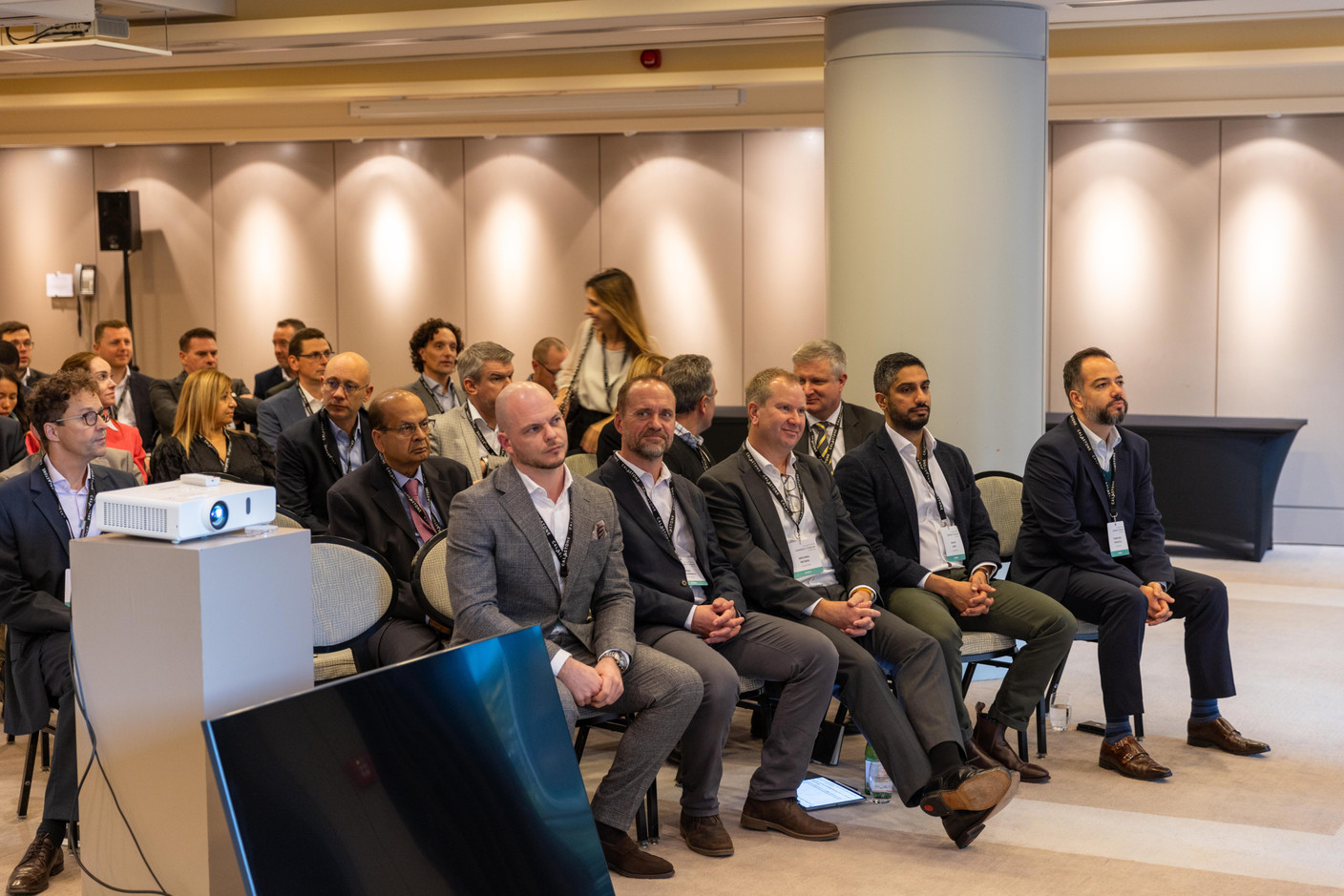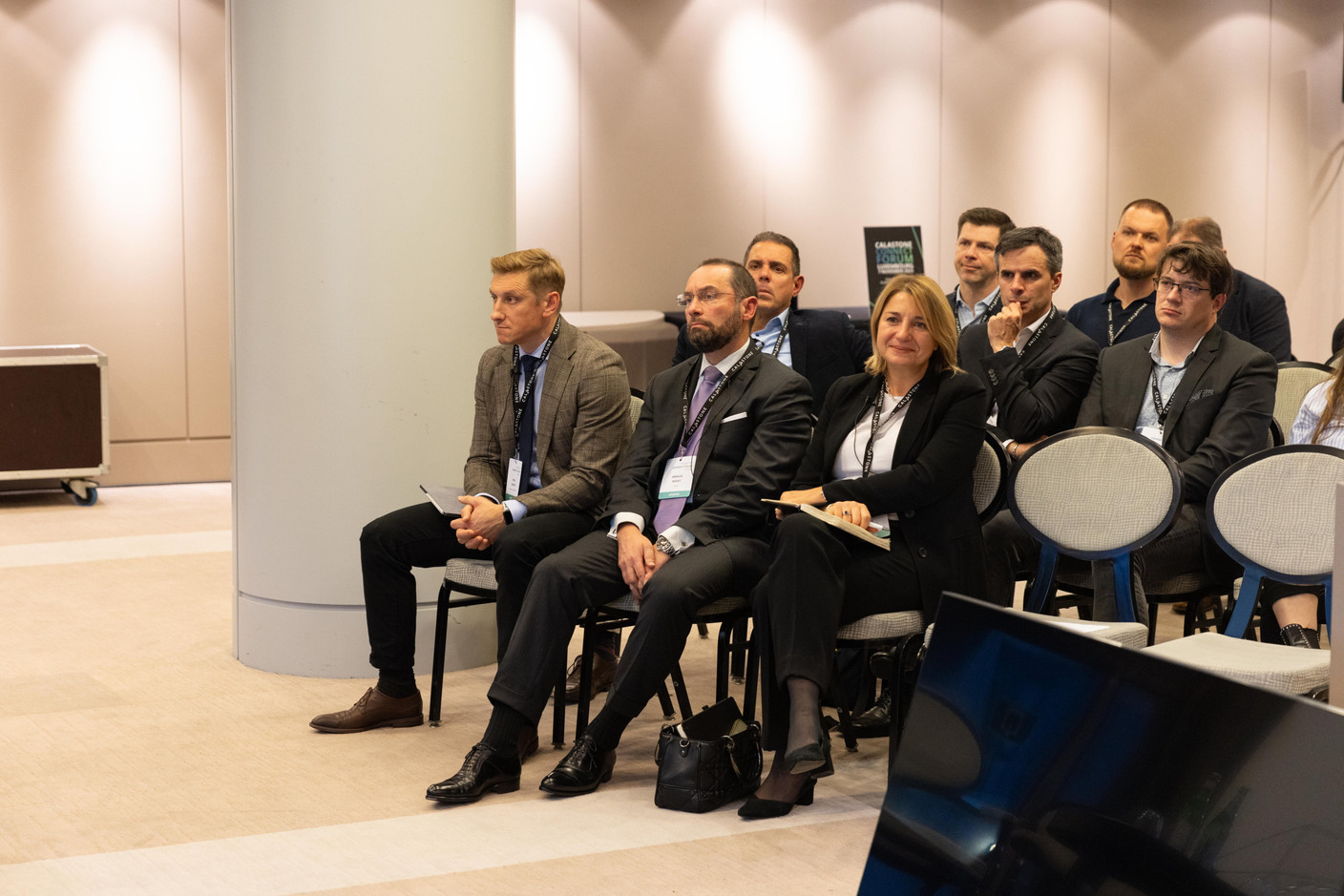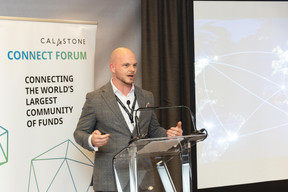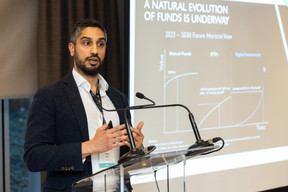“The financial services landscape is undergoing unprecedented change, technologies are advancing at an astonishing pace; you have regulations which are evolving and investor expectations which are shifting,” said Calastone’s director of sales and relationship management Steve Dublon during his introductory remarks at the fund network’s Connect Forum on 7 November.
The event, which, before coming to Luxembourg, took place in Singapore, Hong Kong and London, brought together Calastone experts and industry players to discuss topics such as digital transformation, artificial intelligence and innovation.
Five key trends
Calastone believes the mutual funds market to be defined by five key trends, explained Dublon. “Firstly, we believe that there’s going to be an increased focus on clients’ experience, with investor expectations being higher than ever, when it comes to convenience, digitalisation and innovation.” As a result, the company expects that financial institutions will need to pivot to meet investor demands, as well provide a “unique investment experience” to retain customers.
Accelerating innovation is the second trend, said Dublon, adding that asset managers, distributors, regulators and other market participants are looking at using tokenisation to open up new markets.
The third trend concerns technology, which “will impact pretty much every financial institution.” Keeping their technology up to date will be crucial for financial institutions to remain current and competitive with customers.
The fifth trend is the demand for greater transparency, driven by the ever-changing regulatory landscape
“The fourth trend is already happening,” argued Dublon. “And this is the threat of big tech providers coming into the traditional asset management space and disrupting it by offering more compelling, more competitive service solutions, which improve the client experience at a much cheaper cost.”
“Last, but not least. The fifth trend is the demand for greater transparency, driven by the ever-changing regulatory landscape, not only to protect the investor, but to also promote a much more healthy and informed investment environment for everyone in the value chain.”
“Change is the only constant”
Ross Fox, head of UK & Europe at Calastone, dove deeper into the trends related to the “ever-accelerating impacts of technology,” as well as the importance of preparing for the future. Referring to Peter Hinssen’s book “The Day After Tomorrow,” Fox emphasised the importance of balancing yesterday’s problems--pricing problems, reconciliation rates, customer complaints and other issues that create negative value--with planning for the day after tomorrow. “If you don’t get that balance right, that’s what could spell disaster.”
“Change is the only constant,” continued Fox, citing the Greek philosopher Heraclitus. Businesses that don’t adapt to changing demands fail, he argued, pointing to examples from previous industrial revolutions, such as carriage companies during the second industrial revolution.
“At the turn of the 20th century, in the UK, there were four and a half thousand carriage companies. Just 11 years later, there were less than 150. Many innovative, competent and successful people saw their businesses fall into ruin due to an inability to gauge the impact of technological change.”
Fourth industrial revolution is “fundamentally different”
We are now living in the fourth industrial revolution, said Fox, which has also been called “the second machine age” by professors from the Massachusetts Institute of Technology. It’s a period characterised by technology merging with our daily lives and breakthroughs in artificial intelligence, advanced robotics, quantum computing and nanotechnology.
It is the fusion of these technologies and their interaction across physical, digital and biological domains that make the fourth industrial revolution fundamentally different
“It is the fusion of these technologies and their interaction across physical, digital and biological domains that make the fourth industrial revolution fundamentally different from anything that we have seen before.”
Fox then turned to the digital transformation of the entertainment industry, talking about the use of generative AI in franchises like Star Wars or Indiana Jones and highlighting the rise of Netflix as a streaming giant and the fall of video rental company Blockbuster. Innovating within the existing business model--DVD rentals--wasn’t working for Netflix. It was their implementation of an emerging technology--streaming--that allowed them to surge ahead, he said.
“The real story of the digitalisation of the entertainment industry is not the death of the DVD. It is the application of technology in the creation, the manufacturing, the distribution and the consumption of media across the entire spectrum of the industry. And this impact just continues to accelerate.”
And in finance?
The Indian government, over the last 15 years, has launched a financial inclusion programme that aims to provide financial services to the wider population, said Fox. But up until 2010, only one in 25 Indians had any form of official identification, meaning that the vast majority of the population were unable to open bank accounts or access investment products and credit facilities.
In 2010, the government introduced a unique identification number--the Aadhaar number--that could be verified on a smartphone, marking “the turning point in the country’s digital transformation journey and the first milestone in a hugely ambitious three-stage plan,” said Fox.
Now, more than 1bn people used this standardised ID to access bank accounts, get insurance, buy mutual funds or save for their pension. And it’s much cheaper to do so. “The cost for banks to verify a person’s identity has dropped around 95% to only three cents per person.”
The second stage--the unified payments interface (UPI)--is meant to replace a cash-based economy by allowing people to pay with digital methods like GooglePay or WhatsApp, said Fox. UPI has gone from processing 100,000 transactions in 2016 to 74bn transactions in 2022.
Data is the third element, “and it could be the most transformational,” allowing people to monetise their own data and to decide with whom their data should be shared.
Accelerating pace of technology
“One of the largest predicted shifts over the course of the next 10 years is going to be the proliferation of personalisation across every single area of our lives,” argued Fox. This goes beyond targeted advertising. Personalised medicine, for example, involves using a person’s unique genetic makeup to determine the best care, while educational platforms are using data and AI to personalise learning materials.
The first instance of “personalisation that we’ve seen across our own industry is the rise of ESG,” said Fox. “Investors are still demanding investment choices that align with their personalised values and priorities. How long until this demand for personalisation extends to tailored investment models, to behavioural finance insights, auto-personalised risk management strategies? My guess is that it’s much closer than we may think.”
Fox concluded by encouraging attendees to think about the “accelerating pace of technology” and its impact on the funds industry, turning threats into opportunities and how to meet the evolving needs and expectations of investors in the future.

























































